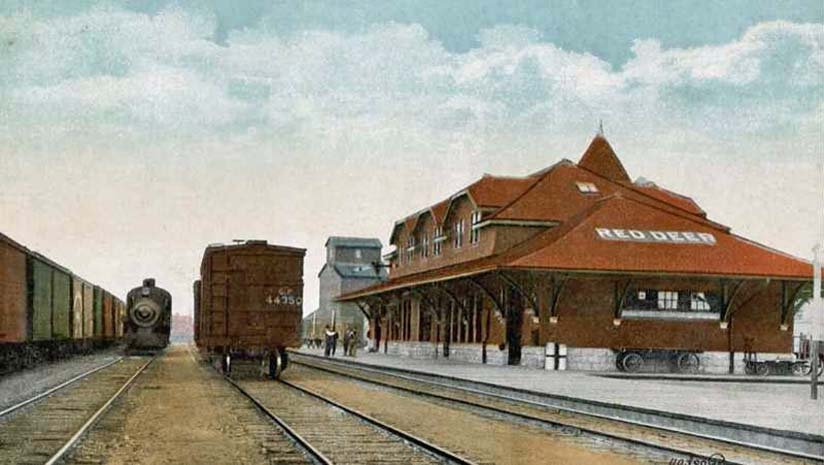
Red Deer Alberta - Rivers, creeks, and streams have shaped the land for eons, slowly carving away earth to reveal the terrain we know
today.
Much of the same can be said for the impact and influence that railways had in shaping the size and shape and even the very location of what is now the City of
Red Deer.
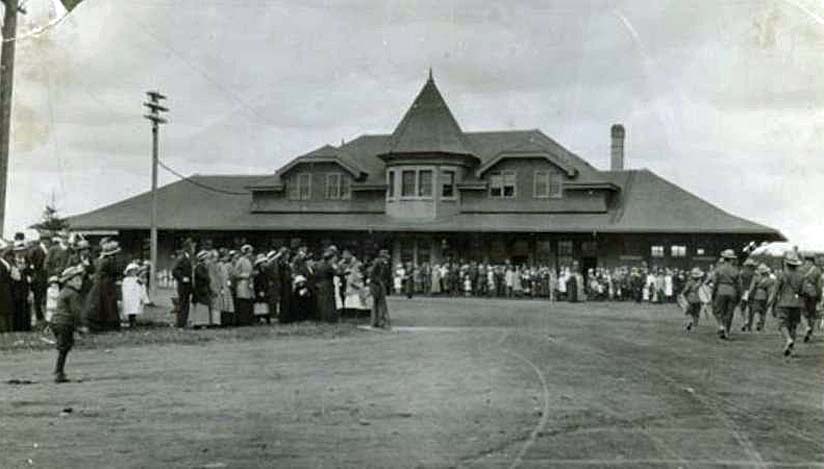
Prior to the construction of the Calgary and Edmonton railway, which started heading north from Calgary in 1890, what we now recognize as the bustling
city of Red Deer was unbroken and forested land.
The nearest significant settlement was the crossing for the C&E Trail of the Red Deer River, very close to where the historic Fort Normandeau replica
stands today.
Navigating how to handle crossing the Red Deer River would be a significant challenge for construction of the railway route.
Initially, the route was planned to take the tried-and-true path that had served animals, first nations people, and fur traders for centuries, past the Red
Deer River settlement.
Yet just as the mighty river powerfully shaped the contours and dimensions of the land, the future site of Red Deer would be single handedly determined by
Reverend Leonard Gaetz.
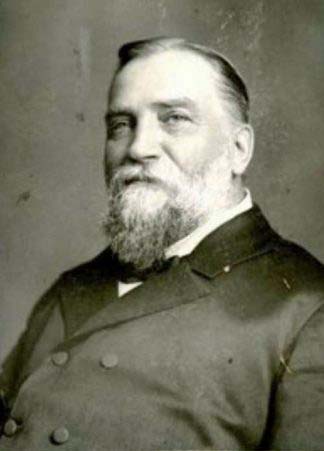
Rev. Gaetz offered James Ross, President of the Calgary & Edmonton Railway company (C&E), land from his personal farmlands for the river
crossing and the townsite for Red Deer.
Ross accepted, and history was forever shaped by the decision, as what is now home to more than 100,000 people grew steadily outward starting at the C&E
train station.
The rails finally reached the Red Deer area in November of 1890, and trains soon began running south to Calgary.
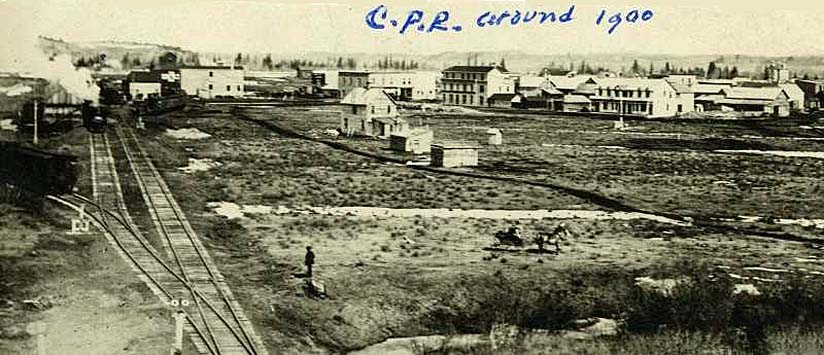
By 1891, the C&E was completed north to Strathcona.
Alberta gained one of its most vital transportation corridors and the province would thrive from this ribbon of steel rails.
Over time, the C&E rail yards grew and expanded to accommodate the demand for moving more and more commodities like grain, coal, lumber, business, and
household items along with passengers.
Those passengers were the pioneer settlers who would make Red Deer the commercial hub that it remains to this day.
For nearly 100 years, the downtown was intimately connected with the railway in the form of hotels built to welcome travelers, grain elevators, warehouses,
factories, and the facilities required to service the locomotives and equipment that operated the trains.
Tracks and spurs dominated the downtown area, especially after the advent of the Alberta Central Railway and the arrival of the Canadian Northern Western
Railway (later absorbed into Canadian National railways).
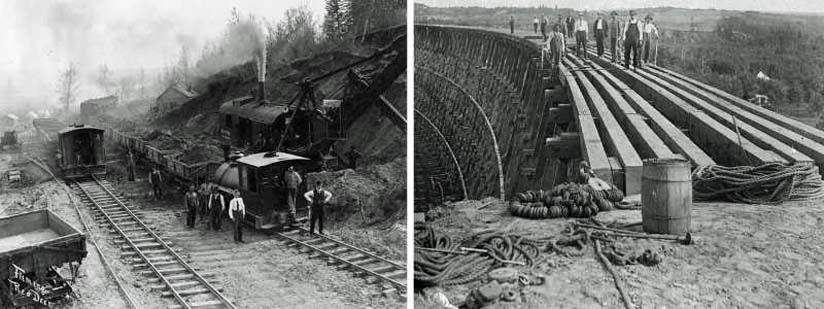
Right: Workers building the Canadian National Railway trestle bridge at Burbank siding near Red Deer - 1924 Photographer? - City of Red Deer Archives P7028.
By the 1980s, the ever-present tracks and downtown rail yard were seen as an industrial blight in the heart of the city that the railway created, so
funding was sought and plans were made to relocate the now Canadian Pacific rails from their historical home to a new modern yard northwest of the
city.
This was actually the second relocation of tracks from downtown as the Canadian National railway tracks were removed in 1960 which permitted the development
along 47th Avenue south of the Red Deer River.
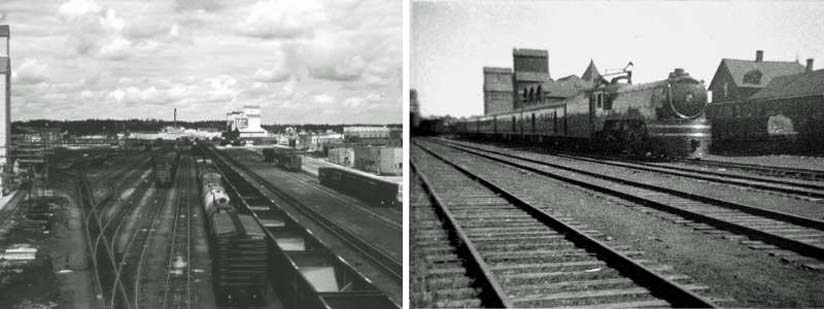
Right: Southbound morning Chinook train at the CP station - 1939 Photographer? - City of Red Deer Archives P13391.
This massive project opened up the Riverlands district downtown to new developments which included condominiums, grocery stores, restaurants, and professional
buildings.
Taylor Drive was built following the old rail line corridor, and removal of the tracks in Lower Fairview meant residents wouldn't hear the rumble of trains in
their community anymore.
Just as the waters gradually shaped the places we know now, the railways definitely forged Red Deer into the vibrant economic hub of central Alberta that it
remains today.
Ken Meintzer.
(because there was no image with original article)
(usually because it's been seen before)
provisions in Section 29 of the Canadian
Copyright Modernization Act.

